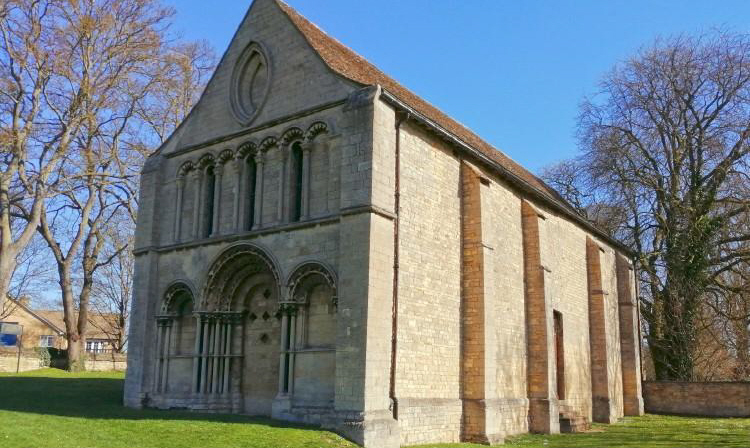

St Leonard’s Priory
St Leonard’s Priory was built in Stamford, supposedly on the site of a monastery which was founded by St Wilfrid in 658 and destroyed in the Danish invasion.
There is no reference to the monastery in the Domesday book. It is first referred to in the mid-12th century. It was a very large religious house. Excavations have revealed the full conventual buildings including the chapter house and church. From the 14th century onwards there were very few monks at the monastery. After the dissolution it passed to the Cecil family.
Excavations in 1967 were carried out to try to recover the plan of the monastery. There was a single aisled presbytery, later rebuilt with a square east end. The transepts had apsidal chapels. On south side of the site were cloisters. The general plan was revealed in 1968 and cellarers range was examined.
St Leonard’s priory was founded by William II around 1090 and the west front was rebuilt around 1150. Part of the west front of the church and the north arcade survive. The west front is in a fine Transitional style.
These ruins are now a barn and consist of a west front and five arches of arcade. The east bays are pure Norman while the west front is Transitional.
A sewerage pipe cutting across the frontage of Priory Farm revealed 9 burials aligned east to west some six feet inside the boundary wall. A stone coffin (damaged) was found.
Excavation on the south side of the buildings proved the standing building is part of the north arcade of the nave. The cloister was on the south side of the church with a cellarers range to the west.
During excavations carried out prior to 1977 the plan of the monastery was revealed. It had a single-aisled church with a long apsidal presbytery and transepts with apsidal chapels. To the south lay the cloisters surrounded by three ranges of buildings. The western range was probably the cellar and was originally a long open building with a first floor supported on wooden posts although in the later medieval period it was subdivided by cross-walls, presumably to allow the storage of different commodities.
The southern range was probably the monks’ refectory and had a first floor supported on stone columns. The eastern range would have contained the small chapter house mentioned in documentary sources and would usually house the monks’ sleeping quarters. However, in this case the sleeping quarters may have been on the first floor of the western or southern range, closer to the latrines which would have been situated above the elaborate rere-dorter drain discovered in the south-western corner.
This drain contained a mound of organic deposit and refuse, much of it typical of cess-pit material and including fabric, botanical material, pottery and small metal items. However, the layers immediately above this contained material which appears to have come from a late medieval laboratory. This includes fragments of glass distillation vessels (alembics), crucibles associated with metallurgical workings and also mercury in its elemental state, sulphur and copper. Book clasps and fragile, laminated material which may be the remains of pages were also found, suggesting an associated library which was also destroyed. A buried group of clippings from silver coins was found in the adjacent cellar which may also be related to the laboratory and may indicate its location.
This material may relate to the practice of alchemy/science, or to the preparation of medicinal compounds or even coining. The pottery from the drain includes many complete vessels and a nearly complete Spanish lustre-ware altar vase probably from Malaga. The upper levels of the drain contained material relating to the Priory’s destruction during the Dissolution including large quantities of broken stained window glass, roofing material, wall rubble and traces of fallen roof timbers.
Part of the fine transitional west front and north arcade of the church survive. The ruins and site of St Leonard’s Priory is a Scheduled Ancient Monument and the structure is a Grade I listed building.
The grounds are open to the public and entry is through the gates from Priory Road.
The building itself forms a “lock-up” and in fact there is little to see inside. The location now forms an attractive medieval site, thanks to the work carried by the Civic Society in 2003-4 involving the installation of two benches, notice and the interpretation board, that explains the site in detail.
The main medieval architectural attractions are the five 12 C. circular arches and the Gothic west front which was rebuilt in 1833 by the 2nd Marquis.